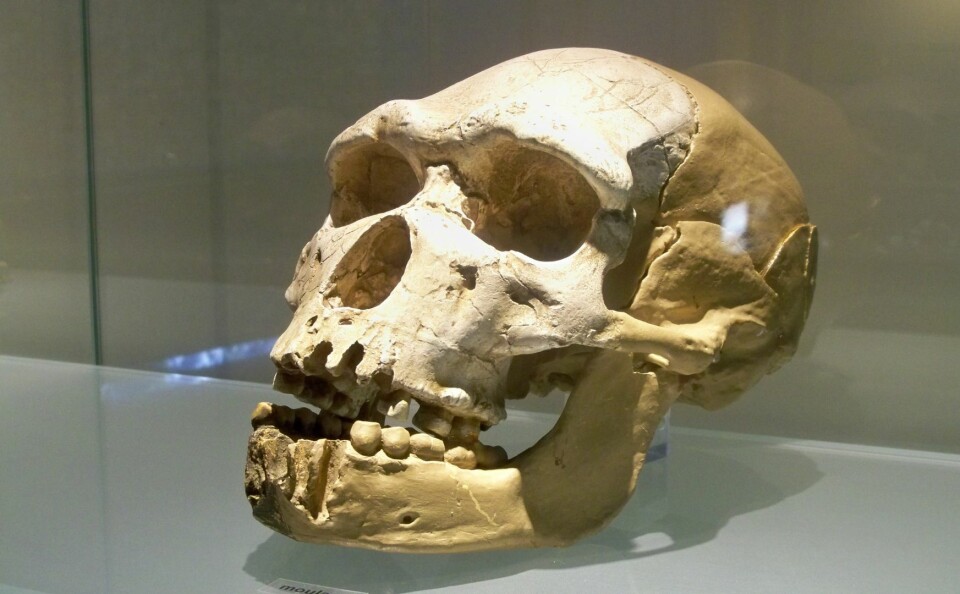-
Visitors to Normandy American Cemetery must soon book in advance
With more than one million visitors last year, the cemetery is one of the region’s most-visited D-Day sites
-
Photos: 94 chateaux open their doors to visitors in Dordogne
The fifth Chateaux en Fête festival offers a chance to look around many impressive properties that are usually private
-
Martel: the medieval French town home to a 'truffle' train and lavender festival
The small town in the Lot offered refuge to an English throne heir until his death
Prehistoric skeleton discovery keeps French village on the global map
Tautavel in Pyrénées-Orientales has embraced tourism thanks to its ancient ancestor, and plans to extend the museum and research centre

Tautavel (Pyrénées-Orientales) had no idea it was going to be in the spotlight and a focus of interest for tourists and researchers.
The southern French village of nearly 900 inhabitants has had to deal with many thousands of visitors since 1971, when discoveries in the nearby Caune de l’Arago cave put it on the map internationally.
‘Tautavel Man’ had smaller head
Tautavel was, for a time, the village where the oldest European was known to have settled, following the discovery in the 1970s by prehistorians Henri and Marie-Antoinette Lumley of a skeleton from 450,000 BC.
A tooth from 560,000 BC was later found in 2018.
Bones, teeth and other skeleton remnants became known as part of ‘Tautavel Man’. Palaeontologists have described him as a 1.64 metre-tall inhabitant of the Roussillon region, with a receding forehead and a skull measuring 1,100 cubic centimetres, some 300 cubic centimetres smaller than the skull of a modern human being.
Read more: Tribute to Frenchman who found 3.2 million-year-old 'Lucy' skeleton
Town built tourist trade around discovery
Palaeontologists found older remnants in Spain later, but by then Tautavel had built a museum themed around prehistory and the discovery in the cave in 1978, which had begun to generate income from tourists.
It then evolved into the Centre européen de recherches préhistoriques de Tautavel, a European research centre in partnership with the Ministry of National Education and the Region, with several laboratories concentrating on research around Tautavel, Spain, Italy or Greece.
“Prehistory and the museum have changed Tautavel,” said Clément Ménard, director of the Centre européen de recherches préhistoriques, adding that the village is now modelled around the museum and archaeological excavations.
Growth of museum and research centre
Tautavel was in the spotlight again in 1992 when the museum was renovated to include another floor dedicated to research activities.
“Ask anyone in the region and they’ll tell you they’ve visited the museum at least once,” said Mr Ménard, estimating that the total number of visitors exceeds two million.
The museum continues to slip into many a conversation in the village and at town hall meetings, particularly since the Occitanie Région unveiled a €30-million renovation project to turn the museum into an even bigger reference site.
Locals felt excluded from expansion plans
Occitanie Région has three possible locations in mind: the existing site, which would require a massive reshuffle, a new construction site on a communal area, or a cave at the heart of Tautavel.
The site will be composed of two floors each measuring 2,000 square metres, and will be dedicated to both tourism and to research laboratories, an increase in size that seems initially at odds with the declining number of visitors: from 150,000 in 1992 to 50,000 in 2019.
Works are expected to start in 2026, and are ambitiously projected to open in 2028.
Monsieur Ménard said that inhabitants will take ownership of the new museum, confessing that Tautavel locals have felt excluded as a result of the hype around the village’s research and tourist activities.
Possible cave site could reveal more remains
The proposed cave site may be hiding yet more surprises.
Only 11 of the 18 metres of the cave have been explored, and the seven remaining metres are estimated to encompass more than 130,000 years of history.
Since 1967, 152 remnants of human beings have been excavated.
Media company Metro-Goldwyn-Mayer went to Tautavel when the skull of the ‘Tautavel Man’ was carried out of the cave in 1971.
Who knows when the 153th remnant will be excavated?
Related articles
Fifteen dinosaur-themed parks and exhibitions to visit in France
3D replica of 33,000-year-old cave art to go on display in Marseille
Bronze Age jewellery discovered intact at prehistoric site in France
























